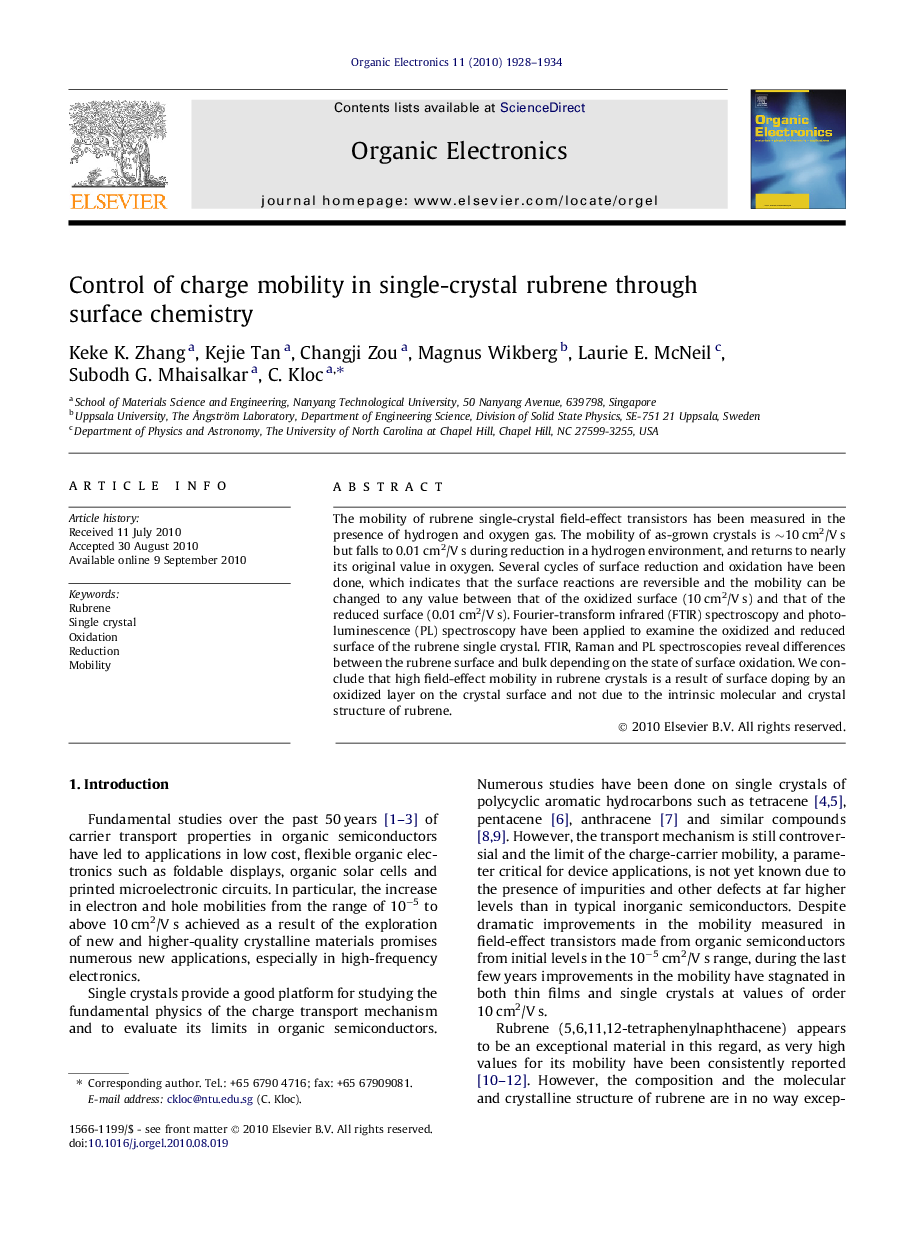| Article ID | Journal | Published Year | Pages | File Type |
|---|---|---|---|---|
| 1264795 | Organic Electronics | 2010 | 7 Pages |
The mobility of rubrene single-crystal field-effect transistors has been measured in the presence of hydrogen and oxygen gas. The mobility of as-grown crystals is ∼10 cm2/V s but falls to 0.01 cm2/V s during reduction in a hydrogen environment, and returns to nearly its original value in oxygen. Several cycles of surface reduction and oxidation have been done, which indicates that the surface reactions are reversible and the mobility can be changed to any value between that of the oxidized surface (10 cm2/V s) and that of the reduced surface (0.01 cm2/V s). Fourier-transform infrared (FTIR) spectroscopy and photoluminescence (PL) spectroscopy have been applied to examine the oxidized and reduced surface of the rubrene single crystal. FTIR, Raman and PL spectroscopies reveal differences between the rubrene surface and bulk depending on the state of surface oxidation. We conclude that high field-effect mobility in rubrene crystals is a result of surface doping by an oxidized layer on the crystal surface and not due to the intrinsic molecular and crystal structure of rubrene.
